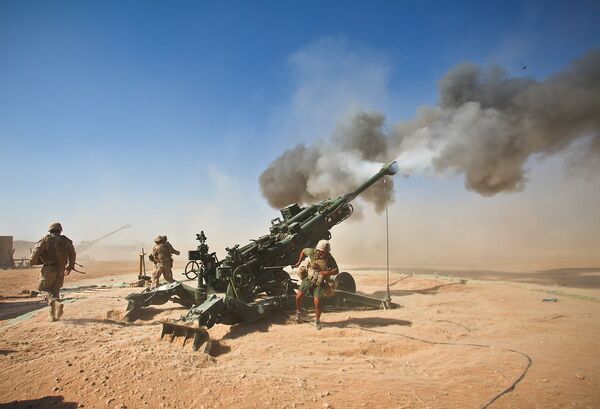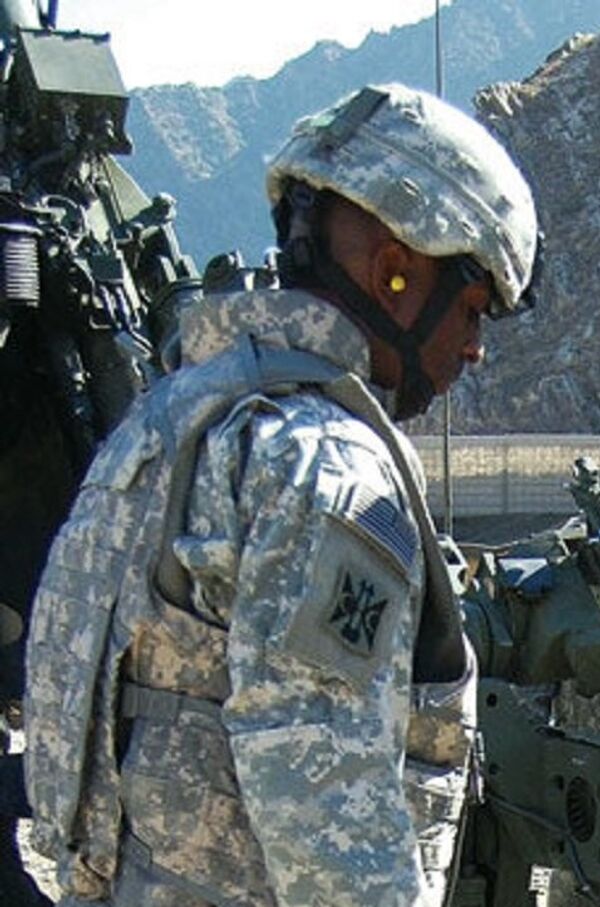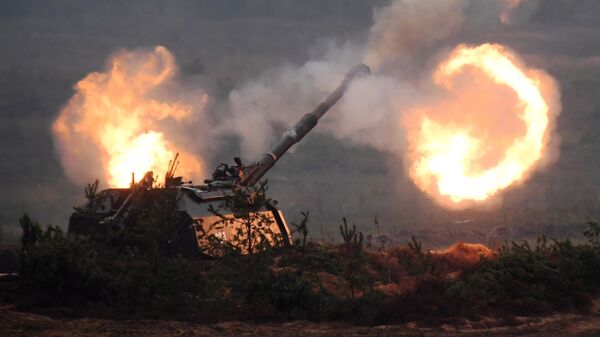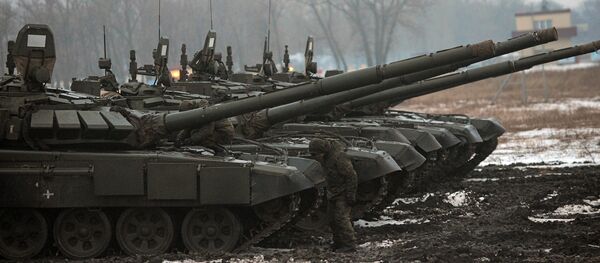Lasers vs. GPS
The US was the first country to adopt guided artillery munitions into its military with the 155-mm M712 Copperhead cannon-launched laser-guided explosive shell, introduced in 1982. The Soviet Union followed shortly thereafter with the 152mm 2K25 Krasnopol laser designator-guided shell, introduced in 1986.
The two systems had similar accuracy and range characteristics and targeting principles, although the Soviet Krasnopol's effective firing range was 20 km, compared to the Copperhead's 16 km. Both shells featured an inertial system to correct the round in mid-flight, with a semi-active laser switched on during the final approach to target to improve accuracy.
However, as Saranov pointed out, early experience proved that the guided artillery shell principle was fraught with issues that needed solving. "Shells could only hit targets located in the line of sight of the laser illumination station's operator," the journalist noted. Furthermore, bringing the targeting system up to the frontline unnoticed was no easy task. Operators "would have to drag the automatized fire control system with laser target designator, range finder, commander's console and radio communications station along," these components together weighing several dozen kilograms.
Nevertheless, Viktor Murakhovsky, editor-in-chief of Arsenal of the Fatherland, a Russian military magazine, emphasized that while laser-guided munitions do have their limitations, they can't be beat when it comes to accuracy.
What's more, the military expert pointed out that with improvements in technology, the laser rangefinder-designator "no longer needs to be carried, but can be installed on [armored vehicle-based] mobile reconnaissance points, helicopters or even drones."
In any case, starting in the late 1990s, Russian and American views on guided artillery shells began to diverge. Russian weapons makers continued to improve the Krasnopol, expanding its range to 25 km, while the Americans switched to satellite navigation for targeting.
In 2006, the Pentagon adopted the M982 Excalibur, a GPS-guided projectile. The system's use in Iraq proved satisfactory to US generals, with 92% of the ammunition fired landing within a radius of just 4 meters of its target at a range of up to 40 km. An upgraded Excalibur saw a range increase to 57 km. Additionally, satellite navigation improved US artillery systems' operation in poor meteorological conditions, with the earlier Copperhead often simply impossible to aim due to cloud cover, strong fog or smoke.

However, as experts have pointed out, the American system has one major drawback which can offset all its advantages.
"The satellite guidance of high-precision weapons allows [the US] to carry out only 'policing tasks'," Alexei Levchenkov, director of TeKnol, a technology firm specializing in navigation systems, explained. "If there is resistance in the form of radio electronic warfare systems, you can forget about satellites. In that case, there are only two methods of guidance: inertial or target illumination."
Another shortcoming with the GPS-guided shell is its lack of accuracy against moving targets. Meanwhile, the Krasnopol has proven capable of hitting enemy armor moving at speeds of up to 36 km per hour.

Cost-Efficiency
The main drawback of guided artillery rounds has been their price tag, which prevents them from being fitted on all artillery. The cost of the Excalibur and Krasnopol is roughly the same, running $50,000-$70,000 apiece.
A cheaper alternative is using rounds with 'smart' gadgets, GPS sensors and miniaturized aerodynamic controls fitted on conventional ammunition. In 2013, the Pentagon began receiving the M1156 Precision Guidance Kit, which turns the Army's existing 155 mm shells into smart weapons at less than $10,000 apiece. The tradeoff is accuracy, which is about half that of the Excalibur. The Moscow-based Kompass Construction bureau began worked on its own GLONASS-equipped navigation module for artillery ammunition.
"In the future, ammunition with these kinds of kits will be used to fire on unobservable targets, while laser-guided rounds will be used on those within the line of sight," Murakhovsky believes. "In this case, the use of shells will decline significantly. Under current norms, 600-900 shells can be expended to destroy a single tank; the Krasnopol, meanwhile, has a hit probability of 90-95%, and of course, no tank can withstand a 155 mm projectile penetration from above," the expert concluded.



